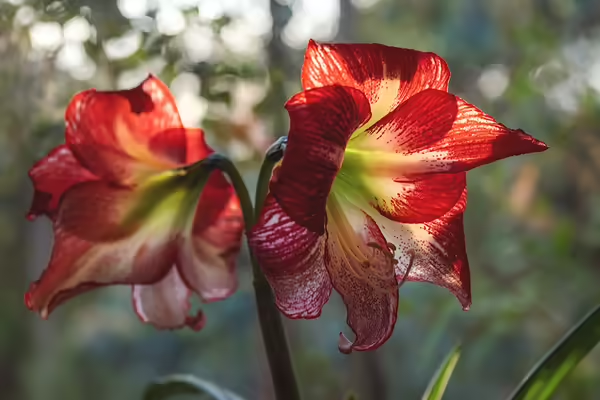
URBANA, Ill. — The gift of gardening is an experience anyone can appreciate this holiday season. Take the stress out of shopping this holiday season and give a blooming amaryllis kit that brings the beauty of nature indoors.
Poinsettias are beautiful, popular holiday plants, but the gift of an amaryllis bulb kit is one to enjoy year after year by following a few steps. An amaryllis kit includes everything you need to force a large bulb to transform into multiple showy, bell-shaped blooms atop a 1-foot green stalk. Forcing bulbs to bloom indoors is a simple gardening technique that imitates natural environmental conditions and tricks the bulb into flowering inside instead of out in the garden.
When purchasing, note that some amaryllis bulbs can be pricey, but remember you pay for what you get. The largest bulbs will have the most blooms. Amaryllis flowers are available in many colors, including red, white, peach, pink, and variegated.
Growing amaryllis bulbs is easy and can be a fun winter gardening activity for all levels of gardeners. Amaryllis bulbs are usually sold in a kit that contains the soil, a bulb, and a pot. Plant the bulb in the container with the top third of the bulb above the soil line. If purchasing a decorative container, ensure it has drainage holes in the bottom and is only 1-2” larger in diameter than the bulb.
Water the newly planted bulb well; water should flow out of the bottom, and then set it in a warm, sunny area to stimulate growth. Only water the plant when the top 2” of the soil feels dry to the touch. If the flower stalk looks weak or spindly, it either needs less water or more sunlight. The container may also need to be rotated occasionally so the stalk doesn’t become lopsided.
After four to six weeks of growth, get ready for the show-stopping amaryllis blooms to appear. Once the plant starts to bloom, remove it from the direct sun to maximize the blooms, which will perform for a few weeks.
When the blooms fade away, return the container to a warm, sunny spot, and then a series of long, strappy leaves will develop. Once the flower stalk turns yellow, cut everything down to the base to prevent the plant from wasting energy with seed formation. This time of growth is crucial for bulbs, as it will create and store food for next year's blooms. Fertilize the bulb every three weeks with an all-purpose houseplant fertilizer.
In the spring, after the chance of frost has passed, you can plant the bulb outside in the garden or a patio container for added foliage interest. While it will not bloom again during the summer, it will thrive as it receives natural rainfall and sunlight for a few months.
Bring the bulb back inside before the first frost of fall, place the planter in a cool, dark place, and stop watering it. The bulb needs to go through a resting period of 8 to 12 weeks to rebloom. Once you see it starting to regrow, bring the plant back into the sunlight and start the process all over again.
For more information on plant selection and care, connect with your local Extension county office at go.illinois.edu/ExtensionOffice.
Brittnay Haag is an Illinois Extension horticulture educator for Livingston, McLean, and Woodford counties. Gardeners Corner is a quarterly newsletter from gardening experts around the state. Each issue highlights best practices that will make your houseplants, landscape, or garden shine in any season. Join the Gardener’s Corner email list at go.illinois.edu/GCsubscribe for direct access to timely tips.
Illinois Extension leads public outreach for University of Illinois by translating research into action plans that allow Illinois families, businesses, and community leaders to solve problems, make informed decisions, and adapt to changes and opportunities. Illinois Extension is part of the University of Illinois Urbana-Champaign College of Agricultural, Consumer and Environmental Sciences.